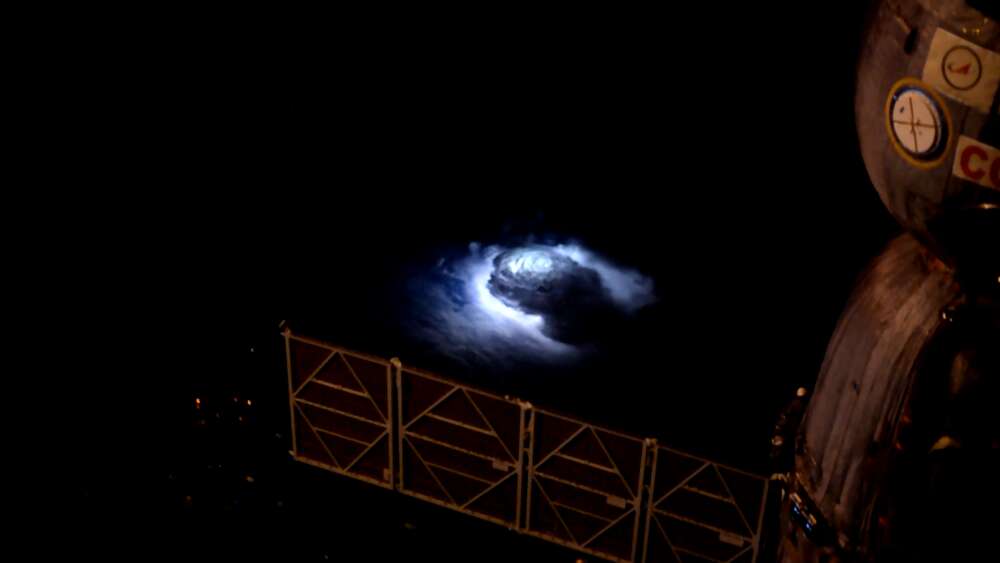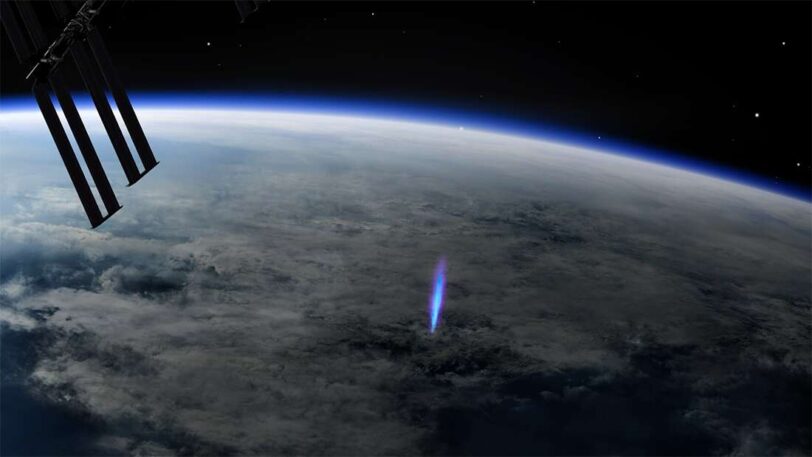A thunderstorm usually comes with lightning, a bright jagged strip that moves from the Earth’s cloud in the shortest route possible. But did you know that sometimes lightning fires straight up? Oh, and it’s blue.
“Blue jets” – lightning-like electric discharges that shoot from the tops of thunder clouds up to 50 kilometers (30 miles) into the stratosphere and last only milliseconds – are rare but not unheard of. We do not usually see them because the clouds that form the thunderstorm and the atmosphere that protects us from radiation obscure our view from the ground. Not so, for the International Space Station (ISS) weather monitoring equipment. Viewing the weather on Earth from 400 kilometers above offers a front view.
Now, using the ISS’s European Atmospheric Interaction Monitor (ASIM), researchers have documented five intense 10-millisecond blue flashes, one generating a pulsating “blue jet” that fires into the stratopause (the stratosphere-mesosphere boundary)generating the glowing disk of optical and UV light known as “elves”.

The ASIM Observatory – often referred to as the “Storm Hunter” – was installed on the ISS in 2018 to document electrical discharges from storms upwards above cloud peaks and has now fulfilled its purpose, with researchers publishing their findings in the journal Nature.
We confirmed the existence of these unusual types of lightning – jets, sprites and elves, commonly known as transient luminous events (TLE) – in the early 1990s, when a video of a sprite was accidentally caught in front of the camera. A few years later, the red sprites and blue jets were confirmed by video observations from NASA’s space shuttle, followed by the discovery of elves (necessarily short for Light Emission and very low-frequency interference due to electromagnetic pulse sources). All these phenomena are super bright, but last only milliseconds, so it is difficult to observe and study them.
In 2015, ESA astronaut Andreas Mogensen was tasked with an experiment known as Thor (named after the Norse god of thunder) to capture thunderstorms from the ISS using a new system for imaging thunderclouds. His photos of the blue jets and flashes led to the ASIM storm hunter being installed on the space station in 2018.
Capturing these phenomena is difficult but vital in our study of the Earth’s meteorological systems. Researchers suspect that they could even affect the concentrations of greenhouse gases in the Earth’s atmosphere, so understanding how lightning forms in the clouds can help us mitigate CO2 emissions on our planet. Besides, they look really, really great.





